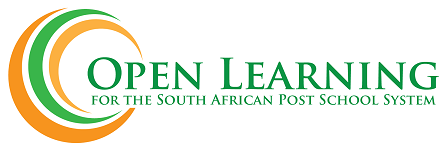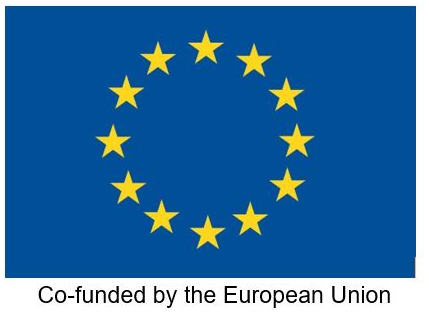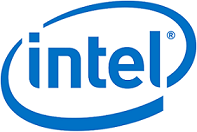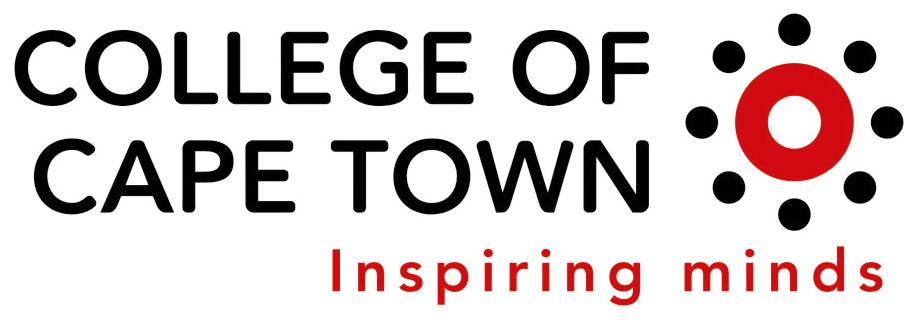| Frequently Asked Questions |
|---|
1. What do we mean by Open Educational Resources?Digitised materials offered freely and openly for educators, students and self-learners to use and reuse for teaching, learning and research.’ (OECD) ‘OERs are educational materials and resources offered freely and openly for anyone to use and under some licenses to re-mix, improve and redistribute.’ (Wikipedia) In its simplest form, the concept of Open Educational Resources (OER) describes any educational resources (including curriculum maps, course materials, textbooks, streaming videos, multimedia applications, podcasts, and any other materials that have been designed for use in teaching and learning) that are openly available for use by educators and students, without an accompanying need to pay royalties or license fees. The term OER is largely synonymous with another term: Open CourseWare (OCW), although the latter may be used to refer to a specific, more structured subset of OER. An Open CourseWare is defined by the OCW Consortium as ‘a free and open digital publication of high quality university‐level educational materials. These materials are organized as courses, and often include course planning materials and evaluation tools as well as thematic content’. 2. Why do we need OERs in HE?Because there are specific gains in sharing OERs and penalties for not sharing. Pull arguments i.e. gains for sharing:
Push arguments i.e. threats for not sharing:
3. What are the benefits of OER for the HE institutions?
4. What’s in it for me?
5. OERs for who?
6. Are OERs sustainable? What is the long-term viability of OERs?There is limited research evidence on sustainability of OERs. However, there are various funding models which point to sustainability:
7. How can I be sure about the quality of OERs available?
8. What other issues are there regarding OERs?Keeping materials up-to-date and in multiple repositories
9. Is an OER the same as e-learning?OER is not synonymous with online learning or e-learning, although many people make the mistake of using the terms interchangeably. Openly licensed content can be produced in any medium: paper-based text, video, audio or computer-based multimedia. A lot of e-learning courses may harness OER, but this does not mean that OER are necessarily e-learning. Indeed, many open resources being produced currently – while shareable in a digital format – are also printable. Given the bandwidth and connectivity challenges common in some developing countries, it would be expected that a high percentage of resources of relevance to higher education in such countries are shared as printable resources, rather than being designed for use in e-learning. 10. Is an OER the same as open learning/open education?An OER can support open learning/open education, but the two are not the same. Making ‘open education’ or ‘open learning’ a priority has significantly bigger implications than only committing to releasing resources as open or using OER in educational programmers. It requires systematic analysis of assessment and accreditation systems, student support, curriculum frameworks, mechanisms to recognize prior learning, and so on, in order to determine the extent to which they enhance or impede openness.
11. How open is an open license?A common misconception is that ‘openly licensed’ content belongs in the public domain, and that the author gives up all of their rights to this material. This is not so. In fact, the emergence of open silences has been driven strongly by a desire to protect a copyright holder’s rights in environments where content (particularly when digitized) can so easily be copied and shared via the Internet without asking permission. A broad spectrum of legal frameworks is emerging to govern how OER are licensed for use. Some of the legal frameworks simply allow copying, but others make provision for users to adapt the resources that they use. The best known of these is the Creative Commons licensing framework (see www.creativecommons.org). It provides legal mechanisms to ensure that authors of materials can retain acknowledgement for their work while allowing it to be shared, can seek to restrict commercial activity if they wish, and can aim to prevent people from adapting it if appropriate. Thus, an author who applies a Creative Commons (CC) license to their work specifically seeks to retain copyright over that work, but agrees – through the license – to give away some of those rights.
A bit about Creative Commons (CC):
12. What is the difference between OER and open access publishing?Open access publishing is an important concept, which is clearly related to – but distinct from – that of OER. Wikipedia notes that the term ‘open access’ is applied to many concepts, but usually refers either to:
Open access publishing is typically referring to research publications of some kind released under an open license. OER refers to teaching and learning materials released under such a license. Clearly, especially in higher education, there is an overlap, as research publications typically form an important part of the overall set of materials that students need to access to complete their studies successfully, particularly at postgraduate level. Nevertheless, the distinction seems worth applying because it allows more nuanced discussion and planning about which kinds of open licenses would be most appropriate for different types of resources. 13. Should I worry about ‘giving away’ my intellectual property?A key concern for educators and senior managers of educational institutions about the concept of OER relates to ‘giving away’ intellectual property, with potential loss of commercial gain that might come from it. This is often combined with a related anxiety that others will take unfair advantage of their intellectual property, benefitting by selling it, plagiarizing it (i.e. passing it off as their own work), or otherwise exploiting it. These concerns are completely understandable. In some instances, of course, when educators raise this concern, it actually masks a different anxiety – namely, that sharing their educational materials will open their work to scrutiny by their peers (and that their peers may consider their work to be of poor quality). Whether or not the concern is justified, it is important to determine what is truly driving the concerns of educators. When the concern is the loss of commercial opportunity, this requires a particular response (engaging with the incentives for sharing). But when this is masking a concern about peer and student scrutiny, this needs to be dealt with differently (and will usually involve some policy or management drive to overcome resistance to change). As more institutions around the world are, at different levels, requiring their educators to share more materials under open silences, experiences clearly demonstrate that this opening of intellectual property to peer scrutiny is having the effect of improving quality of teaching and learning materials. This happens both because educators tend to invest time in improving their materials before sharing them openly and because the feedback they receive from peer and student scrutiny helps them to make further improvements. While a small percentage of teaching and learning materials can – and will continue to – generate revenue through direct sales, the reality has always been that the percentage of teaching and learning materials that have commercial re-sale value is minimal; it is also declining further as more and more educational material is made freely accessible on the Internet. Much of the content that was previously saleable will lose its economic value while the niches for sale of generic educational content will likely become more specialized. However, if a resource truly has potential to be exploited for commercial gain through sale of the resource, then it should be possible – and encouraged – for an educator (or an institution) to retain all-rights reserved copyright over that resource. Intellectual Property Rights (IPR) and copyright policies for education need to be flexible enough to allow the educator and/or institution to retain all-rights reserved copyright for resources that have this potential commercial value. It is becoming increasingly evident that, on the teaching and learning side, educational institutions that succeed are likely to do so predominantly by understanding that their real potential educational value lies not in content itself (which is increasingly available in large volumes online), but in their ability to guide students effectively through educational resources via well-designed teaching and learning pathways, offer effective support to students (whether that be in practical sessions, tutorials, individual counselling sessions, or online), and provide intelligent assessment and critical feedback to students on their performance (ultimately leading to some form of accreditation). Although it may seem counter-intuitive, therefore, as business models are changed by the presence of ICT, the more other institutions make use of their materials, the more this will serve to build institutional reputation and thereby attract new students. Given this, it is important for copyright holders of educational materials to consider carefully what commercial benefits they might find in sharing their materials openly. Of course, the primary benefits of harnessing OER should be educational (see ‘How can education benefit by harnessing OER?’ below), but the issue of sharing content openly may also be considered a strategy to protect oneself commercially. The following benefits can accrue from sharing content under an open license:
Open silences maximize the likelihood of content-sharing taking place in a transparent way that protects the moral rights of content authors. Those who share materials openly already have significant opportunities to build their individual reputations through these online vehicles. 14. How will we guarantee the quality of an OER?In the final analysis, responsibility for assuring the quality of OER used in teaching and learning environments will reside with the institution, programmer/course coordinators, and individual educators responsible for delivery of education. As they have always done when prescribing textbooks, choosing a video to screen, or using someone else’s lesson plan, these agents are the ones who retain final responsibility for choosing which materials – open and/or proprietary – to use. Thus, the ‘quality of OER’ will depend on which resources they choose to use, how they choose to adapt them to make them contextually relevant, and how they integrate them into teaching and learning activities of different kinds. This task of assuring quality has been complicated by the explosion of available content (both open and proprietary). This is both a blessing, as it reduces the likelihood of needing to develop new content, and a curse, as it demands higher level skills in information searching, selection, adaptation, and evaluation. As institutions share more educational content online, they will want to ensure that this content reflects well on the institution and may thus invest in improving its quality before making it available in repositories. In the OER environment, quality assurance will thus be assisted by the development of such repositories, which will provide at least first levels of quality assurance. 15. How can education benefit by making use of an OER?The most important reason is that openly licensed educational materials have tremendous potential to contribute to improving the quality and effectiveness of education. The challenges of growing access, combined with the ongoing rollout of ICT infrastructure into educational institutions, indicates that it is becoming increasingly important for them to support, in a planned and deliberate manner, the development and improvement of curricula, ongoing programme and course design, planning of contact sessions with students, development of quality teaching and learning materials, and design of effective assessment – activities all aimed at improving the teaching and learning environment while managing the cost of this through increased use of resource-based learning. Given this, the transformative educational potential of OER revolves around three linked possibilities:
Deliberate openness acknowledges that:
16. Is an OER really free?The issue of freedom and its definition has been widely debated since the advent of open licenses, possibly most significantly in the Free and Open Source Software environment. Open Source and Free Software definitions specify four types of freedom:
Similar considerations apply when considering licenses for OER. However, there is another specific dimension of OER ‘freedom’ that warrants explicit discussion, and that is the notion of cost. Many proponents of OER advocate that a key benefit of open content is that it is ‘free’ (i.e. it does not cost anything to download – leaving aside costs of bandwidth, of course – and use). This is literally true: by definition, open content can be shared with others without asking permission and without paying license fees. However, simplistic assertions that OER is free – and by extension that use of OER will cut costs of educational delivery – mask some important cost considerations. Educational institutions that are serious about teaching and learning will need to ensure that their spending on personnel and other related expenses reflects a sustained effort to invest in creating more effective teaching and learning environments for their students. This will require investment in, among other things, the following:
So, how does this relate to OER? As educational institutions make strategic decisions to increase their levels of investment in design and development of better educational programmes, the most cost-effective way to do this is to embrace open licensing environments and harness existing OER. Thus, commitment to OER implies increased investment in teaching and learning, but promises to increase the efficiency and productivity of those investments by providing new ways of developing better programmes, courses and materials. Importantly, this implies a demand-driven approach to OER, where the initial rationale for embracing open licensing environments is not to release an institution’s own intellectual capital, but rather to draw in the growing wealth of openly available OER to improve the quality of the institution’s own teaching and learning. Taking a demand-driven approach can be justified in terms of the improvements in quality that can flow from it. In addition, though, this approach to materials development is cost effective. A further advantage is that, as an obvious by-product, it will typically lead to institutions starting to share a growing percentage of their own educational materials online, released under an open license. Most institutions and educators are instinctively nervous about this, but evidence is now starting to emerge that institutions that share their materials online are attracting increased interest from students in enrolling in their programmes. This in turn brings potential commercial benefits, because the sharing of materials online raises an institution’s ‘visibility’ on the Internet, while also providing students more opportunities to investigate the quality of the educational experience they will receive there. As students in both developed and developing countries are relying increasingly heavily on using the Internet to research their educational options, sharing of OER may well become an increasingly important marketing tool for institutions. Most importantly, harnessing of OER requires institutions to invest – in programme, course and materials development. Costs will include the time of people in developing curricula and materials, adapting existing OER, dealing with copyright licensing and so on. Costs also include associated costs, such as ICT infrastructure (for authoring and content-sharing purposes), bandwidth, running content development workshops and meetings, and so on. However, these costs are a function of investing in better teaching and learning environments, not a function of investing in OER. All governments and educational institutions in all education sectors, regardless of their primary modes of delivery, need to be making these investments on an ongoing basis if they are serious about improving the quality of teaching and learning. Within the framework of investing in materials design and development, though, the most cost-effective approach is to harness OER. This is because:
17. Does the use of an OER exclude the use of commercial content?While it may be a worthy, if somewhat idealistic aspiration to make all educational content available free of charge, in-principle decisions to exclude commercial content from consideration in teaching and learning environments are likely to be inappropriate. Such a stance ignores the reality that there are many high quality educational materials available for purchase and that, for in certain circumstances, their use may be more affordable than attempts to produce that content openly. Thus, the most cost-effective way to develop and procure resources for use in teaching and learning is to explore all available options, rather than excluding some on principle. OER and commercial content can thus be used together in courses and programmes, although course developers need to be careful not to create licensing conflicts by integrating materials with different licensing conditions when designing teaching and learning materials. 18. What policy changes are needed for institutions to make more effective use of an OER?
There are at least four main policy issues:
A good starting point for consideration of OER is to have clear policies in place regarding IPR and copyright. A logical consequence of reconsidering human resource policy will be development or updating of costing/resourcing and performance management systems so that they reward staff for the following:
19. What are the best ways to build capacity in an OER environment?The skills required for institutions to establish an OER effectively are many and include the following:
20. Where do I find an OER?The scope and availability of OER is expanding. New resources are being added to the global body of resources. A current problem arising out of this growth is that there is no single comprehensive listing of all OER (nor, given the extreme expansion of content online, is there ever likely to be one). This means that, in order to find appropriate OER, the searcher will need to employ a number of search strategies:
Here are a few of the popular ones:
Here are just a few:
21. How can I share my OER with others?Once a resource has been developed and an open license has been selected (see OER Commons: http://www.oercommons.org/ for more information), the resource will need to be stored in an online repository in order for others to access it.
There are various options with regard to where these resources might reside:
22. How much can I change an OER for my own purposes?In most instances, a user has enormous latitude to adapt OER to suit contextual needs where the license allows adaptation. If, however, the license restricts adaptation (as, for example, the Creative Commons license with a ‘No Derivatives’ restriction does), others may not alter the resource in any way. It has to be used ‘as is’. This right is not reserved often in OER. The vast majority of published OER welcome users to adapt the original resource. Common ways in which OER can be changed include the following:
In many ways, the fact that changes may be made to the original is what makes OER – compared with other forms of copyrighted materials – especially useful to programme developers. |





